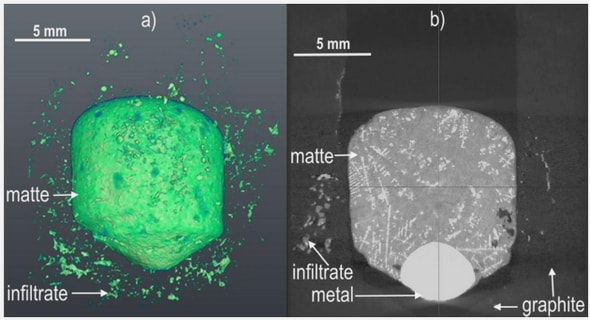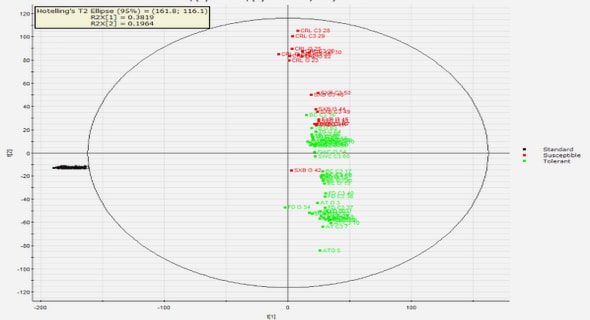Get Complete Project Material File(s) Now! »
Literature Review
In this chapter the authors investigate previous research related to destination management systems. First, the concept of Destination Management Systems is presented. Second, a number of factor models related to information systems use and DMS are presented. Finally, the two regional tourism scenarios of Jönköping and Liverpool are described.
“The whole of science is nothing more than a refinement of everyday thinking”.
– Albert Einstein
Destination Management Systems Concept
It is comprehended that Information Technology (IT) and e-commerce are main drivers of tourism development. Tourism “can be seen as one of the first business sectors where business functions are almost exclu-sively using information and communications technologies (ICT).” (Garzotto et al., 2004, p. 4). Information Technology (IT) and ICT have played an important role in the development of the tourist industry. Computerized reservations Systems (CRS) were among the first applications of IT worldwide, e-Tourism is one of the leading business additions over the Internet and also generating huge revenues for many countries. e-tourism B2C (business-to-consumer) applications hold a 40% share of all B2C e-commerce (Werthner & Ricci, 2004). The majority of the business consists of transactions that are related to booking flights, hotels, and local travel and leisure tickets. Meanwhile, many countries started attracting tourists by providing useful information through destination management system. These destination systems are developed at both national and regional level to distribute information about a diverse and comprehensive range of tourism related products from a distinct geographical region (Buhalis & Licata, 2002; Horan & Frew, 2007). DMSs are interconnected with a number of small and medium sized tourism enterprises (SMTEs), using different platforms and channels that provide various services to the tourists. DMS development not only helps to promote the tourism of a nation or a region, but also increases the growth of SMTEs themselves. However, DMS success highly depends on successful participation and use of the system by its stakeholders (Hornby, 2007). This is still a new and problematic concept and need a standard definition to be institutionalized in tourism, but researchers and practitioners disagree on how it should be defined (Saraniemini & Kylanen, 2011). Frew and Horan (2007) define Destination Management System (DMS) as: “Systems that consolidate and distribute a comprehensive range of tourism products through a variety of channels, and platforms, generally catering for a specific region, and supporting the activities of a destination management organization (DMO) within that region. DMSs attempt to utilize a customer centric approach in order to manage and market the destina-tion as a holistic entity, typically providing strong destination related information, real-time reservations, and destination management tools and paying particular attention to supporting small and independent tourism suppliers”. (p. 67). According to Framke (2002) the term “destination” is frequently used, and it is seen at least as a locality, a production system, an information system, or a composition of services. He shows two distinct ideas. One approach is from a business perspective and another approach is more of sociocul-tural tourism destinations. His objective is to analyse to what extent the destination definitions comment on the geographical boundaries and their content, to draw the conclusion that “the sum of interests, activities, facilities, infrastructure and attractions create the identity of a place, the destination” (Framke, 2002, p. 105). He clearly states that destination is a touristic identity of a “place”.
Prominent destination management writer, Buhalis (2000), states tourism destinations as combina-tions of tourism products offering an integrated experience to consumers. Destination can also be a perceptual “concept”, which can be interpreted subjectively by consumers depending on their travel itinerary, cultural and educational background, purpose of visit, and past experience. It is important to remember that Destination Management system definitions very much focus on the “use and managing application” rather than a place. In order to deeply understand destination systems, they were categorized in four directions by Saraniemini and Kylanen (2011); 1. Economic geography– oriented, 2. Marketing- Management oriented 3. Customer –oriented, and 4. Cultural. Our study will fall under the categorisation of Management oriented destination systems. That means that in our thesis we will focus only on marketing/management oriented destination systems.
Emergence of Destination Management System
Tourism is a growing sector and contributing 10% to the world Gross Domestic Product (GDP), and is projected to increase in 11% by 2014. Either directly or indirectly some 260 million jobs are supported by the Travel & Tourism industry (WTTC, 2011). Despite of the financial crisis, political changes, or natural disasters tourism is continuously growing. According to the statistics of world tourism organization (UNWTO, 2012) international tourists grew by over 4% in 2011 to 980 million compared to 939 million in 2010. Hence, many countries have developed sophisticated destination management systems (DMS) in both national and regional levels to attract international and domes-tic tourists. Certainly that helps tremendously in order to boost the national economy. Although the importance of Destination Management System is obvious, many countries have yet to develop des-tination management or marketing systems. In the early 1990s during the dotcom bubble, the num-ber of DMS projects failing seriously affected the motivation and the development process. Howev-er, nowadays many researchers have shown an interest in the concept and explored a number of are-as within the sector. Identifying and evaluating DMS competitiveness (Fadeel, 2011 ;(Horan, 2010) inter-organizational systems and relationship (Hornby, 2007), DMS reality Check (Sigala, 2009), problematizing the DMS Concept, (Saraniemini & Kylanen, 2011), dynamics of Destination Devel-opment (McLennan, Ruhanen, Ritchie, & Pham, 2012) are some of the notable contributions.
Inter-organizational systems (IOS) allow organizations to transfer information across organizational boundaries. Previously, electronic data interchange (EDI) and electronic funds transfer (EFT) tech-nologies were uses for data exchange, but the high implementation costs was a big barrier for Small and Medium Enterprises (SMEs) to use the IOS (Lawrence, 2009). Due to changes of the consumer behaviour in recent years, it has become more important than ever to be present online. SMTEs need to be aware of these changes and are required to response accordingly.
Capability of Destination Management System
Travel Distribution Solutions (2012) states that DMS can provide considerable benefits including:
- Enhancing the communication and collaboration between targeted groups or participants and the tourists.
- Generating income for the destination management organizations and SMTEs through res-ervations and other value added services.
- Enhancing the business for destination organization and suppliers
- Reducing business costs associated with communication and distribution for its users-
A destination management system could be seen as more than an online booking system or web sys-tem due to it has wide range of services capabilities including destination promotion, tourism man-agement, and business development and visitor database as its foundation. Therefore, DMS increase the visibility to the external world. Many SMTEs have their own websites but have failed to high-light online presence due to limited resources (Buhali, 2008). DMS are acting like an interface be-tween tourism enterprises and external world, through support modules e-commerce system, prod-uct management system, consumer CRM, business CRM and Membership, and Management report-ing.
Buhali (2000) propose seven essential components for DMS success. Those are tourism supplier, tour operator, public sector involvement, travel agents, customer or visitor, investor and technologi-cal development, but, not particularly factors inherent in the usage decision. Destination Manage-ment System is a key technology to destination marketing and to DMOs (see table 2). However, their success not only depend on the system but also on the participation of the tourism operators and suppliers, hotels, restaurants and other SMTEs who will offer their comprehensive product in-formation through the system.
Importance of interorganizational relationship in DMS
DMS are interorganization supported information systems (see figure 1), where public and private organizations are involved and participate simultaneously. Consumers, suppliers and governments are interlinked with each other through a complex information system to offer tourist products. Therefore, it is vital to maintain effective organizational relationships among them for a successful business system. Chen and Sheldon (1997, p. 151) stated that “DMS is an inter-organizational system and consumers able to access up-to-date destination information, reservations and purchases”. Though, a DMS’ ulti-mate goal is to empower partner organizations through online presence and e-capability and finan-cial benefit “Many of the problems originally identified over 15 years ago but still prevalent, even further because of the complexity associated with linking intra- and inter-organizational IS.” (Irani, 2008, p. 1). From this view-point, it is understandable why SMTEs demonstrate low levels of participation and motivation to use DMS. Less participation means that the DMS is in suppress and fewer visitors will come to the site, will lead to organizational failure. Therefore, it is important for DMOs to understand, work in partnership, and maintain good relationship with all stakeholders towards an effective DMS use.
The relationship between public and private sectors is very important for DMS success. Managing the relationship is another considerable argument between the public and private sector as many academicians argue for a partnership DMS between them (Sheldon, 1997; Buhalis & Spada, 2000; Ritchie & Ritchie, 2002; Brown, 2004; UNCTAD, 2005; Daniel & Frew 2008) for better manage-ment and operation. Therefore, the public sector should develop appropriate policies to join DMS implementation and operation, and need better organized relations among the stakeholders to main-tain their presence in the DMS (Sheldon, 1997; Daniel & Frew 2008), otherwise, “…strong private or-ganizations will take over and may or may not promote the destination in accordance with the best interests of the country” (Rita, 2000, p. 1096).
Effectiveness factors of Destination Management System
Evaluation of DMS effectiveness is not uncomplicated. There is limited research devoted to under-stand the effectiveness of DMS usage (Wang, 2008). However, Horan (2009) successfully evaluated DMS effectiveness. In the recent years Fadeel (2011) performed an evaluation in a similar manner but in a different context. DMS is a very complex system that operates in a complex context and sit-uation; “it is web-based inter-organizational system that link with various local and international stakeholders” (Horan, 2010, p. 250). Therefore, DMSs characteristics and context makes it difficult to identify the factors influencing DMS success (Buhalis 2003; Wang 2008, DeLone & MacLean, 2003) (see figure 2). Unsurprisingly, it might be one of the reasons of higher rate of failure than success (Buhalis & Spada, 2000). Horan (2009) shows (see figure 2) that in order to receive high DMS effectiveness, participation and performance management are most important aspects like other marketing, con-tent quality or navigation, cost effectiveness and network integration for DMS success.
1 Introduction
1.1 Research Problem
1.2 Purpose
1.3 Research questions
1.4 Research Perspective
1.5 Knowledge Gap and importance of the Research
1.6 Delimitations
1.7 Disposition
1.9 Glossary of Abbreviations
2 Literature Review
2.1 Destination Management Systems Concept
2.2 Emergence of Destination Management System
2.3 Capability of Destination Management System
2.4 Importance of interorganizational relationship in DMS
2.5 Effectiveness factors of Destination Management System
2.6 Regional Tourism and DMS Scenario 1: DestinationJönköping.se
2.7 Regional Tourism and DMS Scenario 2: Visitliverpool.com
3 Research Methodology
3.1 Introduction
3.2 Philosophical foundation: Interpretive research
3.3 Philosophical approach: Inductive reasoning
3.4 Research Strategy: Mixed methods research (MMR)
3.5 Qualitative strategy in mixed methods research
3.6 Distinctiveness of Qualitative Method
3.7 Quantitative approaches
3.8 Data collection technique: Semi-structured interview
3.9 Justification of semi-structured interview
3.10 Limitation of interview as data collection method
3.11 Sampling Method
3.12 Interview stages
3.13 Validity
3.14 Reliability
3.15 Generalizability
3.16 Content Analysis
3.17 Content Analysis Process
4 Findings
4.1 Factors that motivate DMS use
4.2 Factors that inhibit DMS use
4.3 Useful factors for DMO to increase SMTEs participation
5 Conclusions
6 Discussion
6.1 Limitations and Future Research
References
GET THE COMPLETE PROJECT


